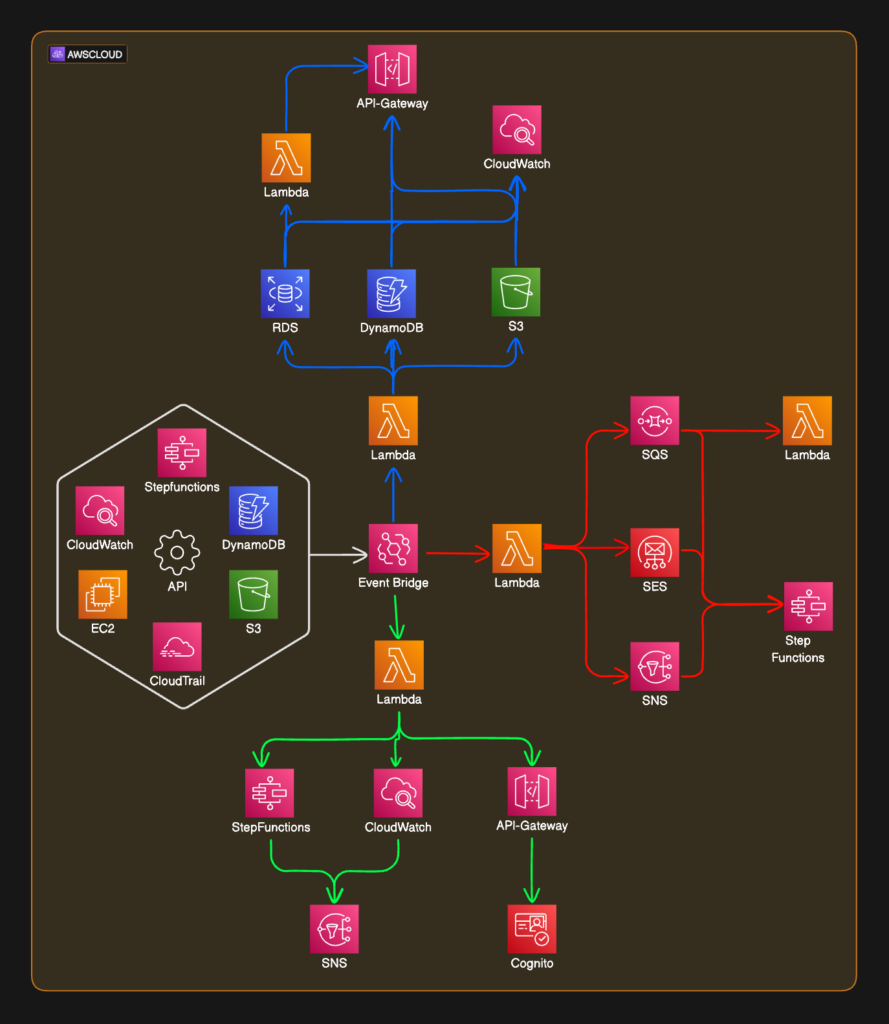In my professional experience, AWS’s serverless services, such as S3, DynamoDB, AWS Lambda, and others, have proven to be highly versatile building blocks for creating a wide range of applications and systems, ranging from simple to complex, without the need for server management. I have found that AWS Lambda often serves as a central connector, seamlessly integrating these services, although any of them can take the lead role, showcasing the flexibility and adaptability of serverless architectures.
The diagram below illustrates a subset of the serverless architectures I have personally designed and implemented. The hexagon represents the various services or triggers that can initiate these architectures, while the three architectural “branches” demonstrate the diverse combinations these services can form, ranging from straightforward applications to the foundations of robust serverless architectures. This visual representation highlights the potential for extensive innovation and emphasizes that these examples are merely a starting point. With AWS, the possibilities for applications, functions, and architectures are limited only by one’s creativity and technical expertise.
Adopting a serverless approach has allowed me to shift my focus towards innovation and development rather than infrastructure management. It enables the creation of seamless, scalable applications and experiences, backed by the robust and flexible ecosystem provided by AWS. This strategy empowers me to concentrate on delivering value and solving complex problems, liberating me from the constraints of managing and provisioning infrastructure. Embracing serverless means embracing a future where technology effortlessly scales to match the demands of the project, enabling me to take on more ambitious challenges and deliver high-quality solutions.

